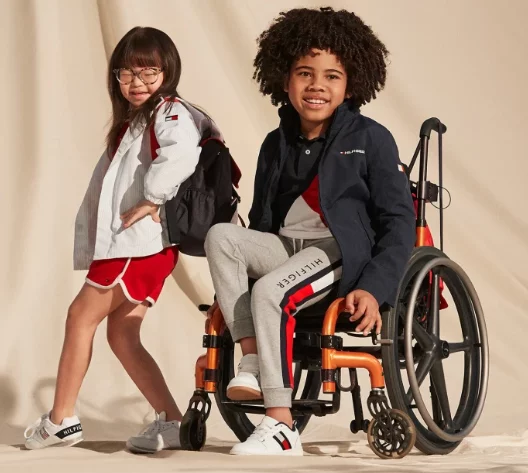By
For people with multiple sclerosis (MS) and other disabilities, getting dressed can be challenging. Navigating buttons or zippers can feel difficult or even some fabrics feel uncomfortable. A lot of adaptive clothing — garments designed to be functional for people with disabilities — focuses heavily on the function. Tommy Hilfiger hoped to change that by offering a line that’s functional but looks as fashionable as his other clothing lines.
“Nobody was doing it and when the idea came to me, I thought it was a natural for us because we are a very inclusive brand and we’re really proud to be leading the way now for adaptive fashion globally,” Tommy Hilfiger told TODAY. “A lot of this has to do with my personal experience as a result of having children on the autistic spectrum and I have firsthand experiencing as far as knowing what their needs are … and understanding the fact that they too would like to be like their peers.”In 2016, Tommy Hilfiger released its line of adaptive clothing for children and in the next year adult clothing was available “as a result of the great response.”
“They need it to function. But they also want to look good and for us it took a bit of studying and due diligence to try to figure out specifically what they would need in terms of function,” he explained. “We were able to use the same design as our mainstream collection but add innovative modifications and make dress easier.”
The brand uses a variety of closures, such as Velcro, magnets and hoop and loop closures, that can be easier to manage. While Hilfiger has personal experience with family members who have disabilities, including his sister who had MS, the company worked with people with disabilities to understand what works best for them.
“We asked a lot of people with disabilities what their preferences would be and we took it very seriously,” he said. “I wanted it to really come out of the gates as being a great collection and it took us quite a while to develop that.”
After people wear the clothes, they might share their thoughts and Hilfiger said that helps them continue to improve upon the design.
“The feedback really helps us to drive the business and the changes,” he said.
In the past, Hilfiger has supported Race to Erase MS, co-founded by Nancy Davis. Her organization has raised money to help drug development for MS. When she was diagnosed 30 years ago, she and others had few options for treatment.
“I had been recently told that I would never walk again and I would never have much freedom in my life and I had a really impossible disease that (doctors) would never find any treatment or cures for, but I decided I wanted to start my own foundation,” she told TODAY. “There’s now 22 drugs on the market that have FDA approval, which is nothing short of a miracle, and it was because of so many people like Tommy Hilfiger and all the different supporters.”
When Davis was diagnosed, she had three young children felt determined to have a different future. She said most people are diagnosed between 20 and 40 when they hit “that stride in their life.”
“I so badly wanted to live my life and had so many dreams and aspirations and they told me the most that I could do in my life is operate the remote control to my TV set,” she said. “It’s scary. It’s the unknown. Today there’s so much hope.”
Even with new medications, though, dressing can still be a challenge for people with MS. Davis recently met with Selma Blair, whom Race to Erase MS honored in the past, and the actress admitted that it took her about 40 minutes to get dressed.
“When you look at how hard it is to get up in the morning and put on clothes it’s really amazing that Tommy was so forward thinking in that he came up with this line that looks beautiful,” she said. “But it makes it very easy for that person who can’t get dressed.”
Click here to read the full article on TODAY.



